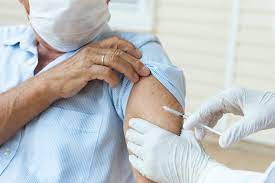The Tragedy of Theranos
- Mahi Mahitcha

- May 17, 2022
- 3 min read
Once named one of the richest women in America, with a net worth of $4.5 billion, Elizabeth Holmes’s life has taken a tumble from fame to fabrication. She was once poised to become a mastermind in the world of medical technology, but it didn’t end up as expected. So, what happened?

Elizabeth Holmes’s story began in her sophomore year of college when she founded a company called Real Time Cures, which would later be renamed to Theranos. Once a Stanford chemical engineering student, she dropped out of university to focus on her startup at age 19, working on it in the basement of a college house in its early days.
Holmes had based her business model off of the concept of running hundreds of blood tests with only a single drop of a patient’s blood, therefore minimizing the amount of pain caused by the blood draw (only a finger pinprick) as well as the time typically taken by laboratories in analyzing samples of patients’ blood.
To run all of these tests in a quick and efficient manner, Theranos needed its own technology, a device dubbed the Edison. It was designed to be a miniaturized laboratory in a box, and perform what are called immunoassays - tests that search for the presence of antibodies in a fluid, in this case, blood. Holmes had lofty ambitions for this device, wanting it to be able to detect the presence of cancer and high cholesterol in a patient’s body - with only a single drop of blood.
However, the Edison had one glaring problem: it simply wouldn’t work. Former Theranos employees reported that the parts of the machine would often fall off, and it wasn’t able to regulate its own temperature, among other things. Various engineers’ attempts to fix the Edison and raise concerns about it to Holmes only resulted in them being disregarded or fired.
Theranos, in a partnership with Walgreens, created wellness centers where consumers could access its blood tests, but this later backfired, as two years of tests were voided in 2016 after being deemed by federal regulators to put patients’ safety at risk. This came as a result of frequent misdiagnoses where patients would be (falsely) told that they had a certain condition, or were not made aware of one, all due to the failures of the Edison device and Holmes’ lies to investors and Walgreens itself.
These false positives and negatives contributed to Theranos’s eventual downfall, when skepticism began to arouse of the legitimacy of the company’s claims. In fact, it came to light that Theranos was only ever FDA approved for one test - a test for the herpes simplex 1 virus.
In October of 2015, Theranos finally became subject to the negative attention of the press. The Wall Street Journal reported that Theranos only conducted a few out of the 240 tests it was claiming to perform with a drop of blood from the patient’s finger, and instead, conducted the majority of them with conventional samples of blood (vials drawn from the arm). In response, Theranos only defended its testing methods.
In early 2022, Holmes was found guilty of wire fraud and conspiracy to commit wire fraud by lying to potential investors in order to raise money for her company. She is expected to be sentenced to prison time in the fall.
The Theranos incident has caused many to wonder: even though Theranos is gone, could its technology still work? Science says not quite.
Though the world initially hailed Holmes as a genius for her revolutionary ideas, some experts were concerned, and doubted it would be plausible. The technology simply did not exist then, and it doesn’t exist now.
People are currently able to measure their blood sugar levels by using a handheld device that takes only a few drops of blood, but for other tests, this may not be the case. Some blood tests need to measure the concentration of a certain protein, for instance, but because a single drop of blood is so small, it can have different amounts of different cells and platelets which throws off the accuracy of any one measurement. This could have been a contributing factor to the lack of accuracy in Theranos’s tests and its ultimate failure.
In short, Elizabeth Holmes did have the right idea, one that could revolutionize modern healthcare, but the technology for her ambitions is likely far in the future.



Comments